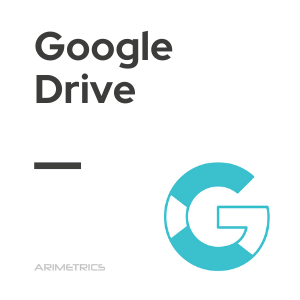
Definition:
Google Drive is a free Google file storage service in the cloud. Launched in 2012 to replace Google Docs,which only had 1GB of storage, it meant a wide increase in capacity for users reaching up to 15GB completely free. In addition, Google Drive incorporates several applications such as a spreadsheet program, a program to create presentations and a text editing program, all 3 very similar to the Microsoft Office package, in this case assimilating Microsoft Excel, Microsoft Powerpoint and Microsoft Word.
Origin and evolution of Google Drive
Google Drive was officially launched on April 24, 2012, but its roots go back much earlier, when Google began exploring ways to improve online collaboration and storage. Prior to Google Drive, Google Docs already offered some cloud storage and editing capabilities, but was limited to 1 GB of space. The need for a more robust solution led to the development of Google Drive, which not only expanded the free storage space to 15 GB, but also more efficiently integrated Google’s productivity applications.
Since its launch, Google Drive has evolved significantly, adapting to the changing needs of users and advancing technology. Initially, Google Drive focused on providing accessible and secure storage space, but over time, numerous features have been added that have enhanced its functionality and appeal. One of the important milestones in the evolution of Google Drive was the introduction of third-party apps through the Chrome Web Store, allowing users to customize their experience and extend Drive’s capabilities beyond Google’s tools. In addition, integration with other Google services, such as Google Photos and Gmail, has improved the cohesiveness of the Google ecosystem, facilitating a more efficient workflow. Over the years, Google Drive has continued to improve its user interface and security features. The implementation of advanced encryption measures and two-step authentication have strengthened users’ trust in the platform. In addition, regular updates have introduced new features, such as real-time collaboration and artificial intelligence to facilitate file organization and search.
Its simple design and full of utilities has made Google Drive one of the most used services of Google. Among its main features are:
- File Storage:15GB of free storage expandable up to 200TB at different rates. It allows us to host all kinds of documents: images, videos, photos, text files, etc … It also allows you to fully integrate these files with other free Google programs such as Gmail, Google Photos or Chromebook.
- Document creation:through Google Docs, which is integrated into Drive, we can create text files, presentations and spreadsheets. It also includes a tool to design online forms and another to create graphs and flowcharts.
- Connectivity:Google Drive is designed so that we can easily share our files with the user we want, allow us to edit documents between several users and access them from any device that has an internet connection, whether it is a computer, mobile or tablet.
- Integrated Apps: in addition to the aforementioned tools for creating documents, drive has hundreds of compatible applications of all kinds, which can be installed from the Chrome Web Store.
Security and privacy in Google Drive
Google Drive implements advanced security measures to protect user data. All files stored in Drive are encrypted both in transit and at rest, ensuring that information is protected from unauthorized access. In addition, Google offers two-step authentication, providing an additional layer of security when logging in. Users also have control over access permissions to their files, allowing them to decide who can view, edit or comment on their documents.
Integration with other Google services
Google Drive integrates seamlessly with other Google services, improving productivity and facilitating workflow. For example, attachments in Gmail can be saved directly to Drive, and photos stored in Google Photos can be managed from the same platform. This integration allows users to work more efficiently by centralizing their documents and files in one place, accessible from any internet-connected device. In addition, Drive automatically synchronizes with Google Calendar and Google Keep, helping users to organize their time and notes effectively.
Alternatives to Google Drive
There are several alternatives to Google Drive that offer different features and benefits to meet various cloud storage and collaboration needs. Below are some of the most popular:
- Dropbox: Known for its simplicity and ease of use, Dropbox offers cloud storage with collaboration features and automatic file synchronization across multiple devices. It also allows you to integrate third-party applications to improve productivity.
- Microsoft OneDrive: Part of the Microsoft ecosystem, OneDrive integrates seamlessly with Microsoft Office applications such as Word, Excel and PowerPoint. It offers cloud storage with real-time collaboration options and is included with Microsoft 365 subscriptions.
- iCloud Drive: Designed for Apple device users, iCloud Drive offers cloud storage that integrates seamlessly with macOS and iOS. It allows you to sync documents, photos and other files between Apple devices, with collaboration features in applications such as Pages, Numbers and Keynote.
- Box: Focused on the enterprise market, Box offers cloud storage with advanced security and user management features. It supports real-time collaboration and integrates with a wide range of enterprise applications.
- Amazon Drive: Offered by Amazon, this service provides cloud storage with basic file management features. It is especially attractive to Amazon Prime members, who receive additional benefits on photo storage.
- pCloud: Known for its focus on security, pCloud offers cloud storage with optional file encryption. It enables document sharing and collaboration and is available on multiple platforms, including Windows, macOS, Linux, iOS and Android.
